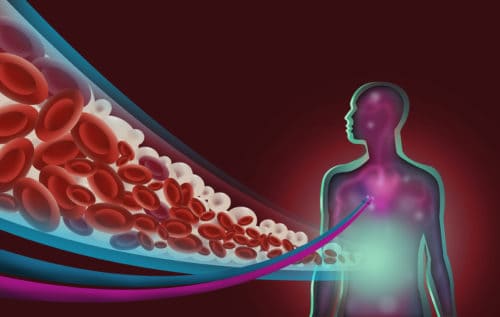Developing Your Diabetes Care Plan Is a Must for Feeling and Looking Your Best

Being diagnosed with prediabetes or type 2 diabetes can be a scary and uncertain time. However, the Life Energy Foundation is here to offer hope and support you on your journey! While diabetes is a chronic, lifelong condition, there are many lifestyle changes you can make to control your diabetes and help avoid the need for expensive medications. That’s why designing your diabetes care plan is essential for success.
In this article, we will lay out the necessary steps to control your diabetes and the factors to incorporate into your care plan. We also want to remind you to be prepared, because you won’t be perfect right away. That’s okay! Don’t hang your head. But, be ready to pick yourself up and get back on track if you do slip up. Here are several of the most important factors to consider for your diabetes care plan.
Nutrition (Not What You Think)
One of the most important aspects of your care plan is to eat healthier. Improving your nutrition doesn’t necessarily mean you have to give up all of the food you love, but you will have to learn to be more mindful about all of your food choices.
Creating a specific type 2 diabetes meal plan will greatly help in your effort to eat healthier and keep your blood sugar in check. The key will be to eat foods lower in calories and fat and higher in fiber, as well as choosing a healthier cooking method, like baking, broiling, roasting, or grilling.
Another important tip is to get used to looking at the nutrition label on everything you buy to make sure it is suitable for your diet plan.
Here are some foods to include:
- Vegetables. Almost all vegetables will be healthy for diabetics and more nutritious than the alternatives.
- Fruits. Just like veggies, most fruits will make a great addition to your diet, but make sure to check on how the fruit is prepared. Dried fruits often have hidden sugars, so it will be best to eat fresh fruit with no additives.
- Whole Grains. This includes foods like brown rice, oats, and barley.
- Nuts and Seeds. Adding nuts and seeds like almonds, walnuts, and chia seeds to your diet will provide you with many health benefits.
- Beans. Many beans, like black beans, kidney beans, and pinto beans, are high in fiber as well as important vitamins like potassium and magnesium.
- Fatty Fish. Fatty fish should only be eaten twice a week for diabetics, but it is a great alternative to other meat sources. Fatty fish are high in omega-3 fatty acids and include fish like salmon, mackerel, and herring.
- Lean Meat. Lean meat is another healthy option for your meat source. This includes chicken, turkey, duck, and lean cuts of beef and pork.
And foods to avoid:
As mentioned earlier, being mindful of what you eat will be the most important part of your care plan. Every individual’s dietary needs will be different, so there is not one specific group of foods all diabetics should avoid. However, if you suffer from other health issues like hypertension, heart disease, or if you are overweight, here are some foods to avoid:
- Salt. Research has not yet proven any correlation between eating salt and insulin resistance, but consuming salts does have negative effects if you have other conditions such as hypertension, heart issues, or are overweight. This means you don’t have to decrease your salt intake unless you are also hypertensive and/or overweight. Here are some foods to remove from your diet if you should avoid high salt intake:
- Salt, salt seasonings, seasoned salt
- Canned foods, like meats, soups, and veggies with salt
- Cured and processed foods
- Boxed food mixes containing potatoes, pasta, and rice
- Condiments and canned sauces like salad dressings, ketchup, and mustard
- Packaged soups, gravies, and sauces
- Pickled foods, olives
- Salty snack foods
- MSG (monosodium glutamate)
- Soy and steak sauces
- Foods with Trans and Saturated Fat. Reducing bad fats in your diet is important because fats contribute to weight gain and weight gain is tied to insulin resistance. Like salt, they are also problematic if you have other health issues, like hypertension or heart problems. Here are some general foods to pass on:
- Processed meats, which are linked as one of the top contributing factors to developing diabetes
- Red meat, fatty cuts of meat, cured meats, sausage, bacon
- Fried foods
- Cheese
- Baked goods and pastries, like pies, cakes, cookies, and croissants
- Butter, margarine, and cream
- Ice cream, milkshakes, and chocolate
This is a lot of nutritional information to take in at once, but you can be prepared by doing research on the foods you eat and altering your diet plan accordingly. The Mayo Clinic also offers an extensive list of diabetes-friendly recipes that can help you on your way to better nutrition.
It may also feel like you’ll have to do your own cooking from now on in order to eat healthily, but that’s not the case! Here is a guide for eating out with diabetes that offers tips for ordering healthy foods at restaurants. You can still lead a normal life with type 2 diabetes, you will just need to be more mindful of your food choices whenever you eat.
Exercise
The next essential area of your type 2 diabetes care plan is implementing an exercise routine in your daily life. Exercise may sound difficult and painful, but it can actually be achieved in fun ways that can easily be added to your day.
You’ll also want to decrease sedentary behavior, like watching TV and working at a desk, as much as possible or combat it by getting up and moving around every hour or two. We all hate commercials, but instead of fast-forwarding through them or running to the fridge for a snack use this time to get up and move. Doing one set of counter pushups or stand-up sit-downs only takes a moment.
For the exercise portion of your care plan, you will want to aim to do what you can, when you can. Here are some of the exercises you can implement in your daily routine immediately:
- Walking – Walking is the easiest way to start exercising. Go for a walk before or after work, or even during your lunch break. You can also plan walks with your family and friends so you can socialize while you exercise together
- Dancing – Like we said, exercise doesn’t have to be intense and difficult. It can be fun! Consider dancing with family and friends to get moving
- Cleaning – Cleaning your house can be a good way to get exercise without having to go anywhere. All the scrubbing and brushing will help your body and make your house look great in the process
- Running Errands – Offer to run an errand for a friend or a loved one who needs something. You’ll get outside and get a bit of exercise on the way
- Playing with Pets – We tend to think that it’s only our pets who play, but you can get a good workout in by throwing a tennis ball, kicking a ball, or even chasing your pet around
- Gardening – Do something you already enjoy and exercise by gardening. You may be helping your plants, but you’re also helping yourself
These are some easy starting points that can help you get active during your daily routine. Your focus should be on being consistent and doing some type of exercise every day. Something is always better than nothing and every move you make is one step closer to success.
If you need more help with the exercise portion of your care plan, consider our online 30 Days to Better exercise program to get started. We also offer our Achieve Medical Exercise Program, a 12-week program focused on helping you adopt new behavior patterns as well as providing you support for ongoing success. If you have been diagnosed with prediabetes we also offer a Diabetes Prevention program in collaboration with Amani Nicol Wellness.
Life/Health Balance
An often overlooked area of dealing with type 2 diabetes and creating a care plan is your life and health balance. You certainly want to get on the right track and start making progress immediately, but that can be difficult. Implementing multiple changes in your lifestyle at one time can also cause added stress.
Be sure to include time in your care plan to recover and recharge. Treat this time as a form of medicine. This can be through practicing meditation, performing breathing exercises, aromatherapy, music therapy, or even doing things like simply sitting and listening, writing, and reading. Whatever brings you peace and calm, be sure to make it an integral part of your care plan to help you destress and find balance.
Other Resources
If you are seeking more help with handling type 2 diabetes, we recommend you look into the CDC’s Diabetes Prevention Program. They offer programs for changing your lifestyle and controlling your diabetes, some of which are covered by Medicare.
Not sure where to start? The Life Energy Foundation can help by providing you with valuable resources and tools. We have over 25 years of experience transforming lives and, when you are ready, we are here to help you transform yours as well.

